




Since I was "off the template," I had to figure the pin cuts manually, and it was wierd: there were two cuts from the template, but then I had to back 1/32" off what I assume was half-way to the following template cuts. Translation: it took a lot of head scratching, scribbling, and a few test cuts to place the pin cuts - it may look like there's just two passes here, but each one of those pockets is wider than the cutter, so it takes four passes on each pinboard to get to this point.
Now that I'm looking at it, another problem is that the bottom dado cut will have to be stopped on each end of the pinboard: if the bottom dado is located over a tail, you can do thru cuts because the "open" ends of the pinboard dado are buried under a tail (the "open" end of the tailboard dado cut terminates either inside the pin pocket or butts against the inside face of the pinboard). As it is now, if I fall asleep again when routing the dadoes, there will be a little rectangular hole in the end grain of the pinboard below the lower tail.
Maybe I'll just start over and do them right.
Sunday, December 28, 2008
Drawers
Saturday, December 27, 2008
First dry fit



Tenons







Mortises



Aprons




Note: since this will painted, I cut the blocks to minimize waste. If it were going to have a clear finish, I would have cut the blocks from the offcut of ripping the rails so that the grain would flow across the glue joints - giving the illusion that the rectangular holes had been cut out of a single board instead of pieced together.
Friday, December 26, 2008
Tapered legs






I find it hard to visualize what a taper will look like from just layout lines, but one of the nice things about tapering is that it's not hard to move the cleats on the jig and take a little more off. I always start conservatively: it's a lot easier to taper a little more off than to add a little back on to "stiletto" legs.
Wednesday, December 24, 2008
Bedside tables
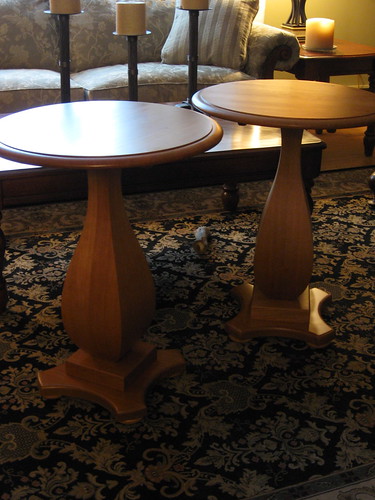
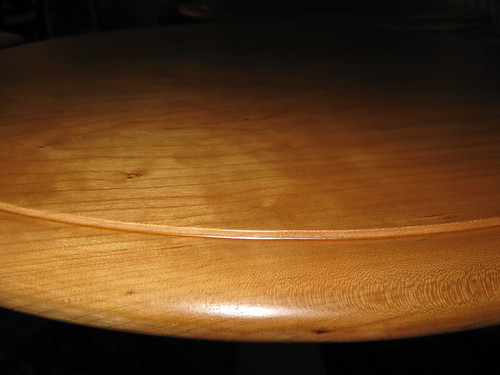
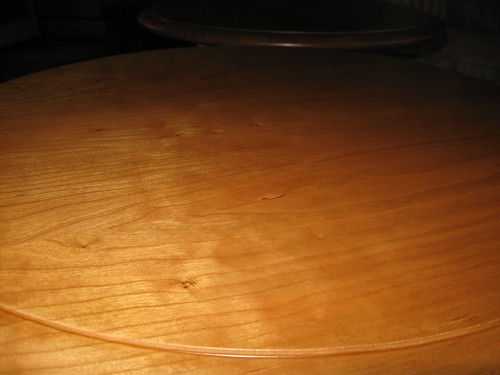
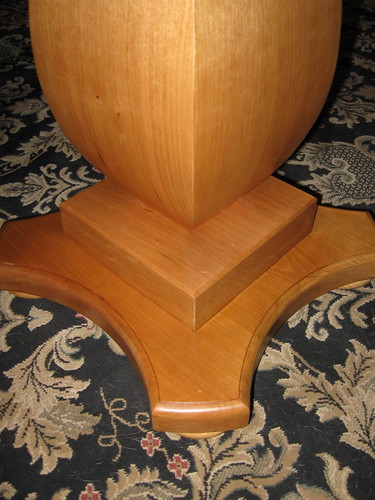

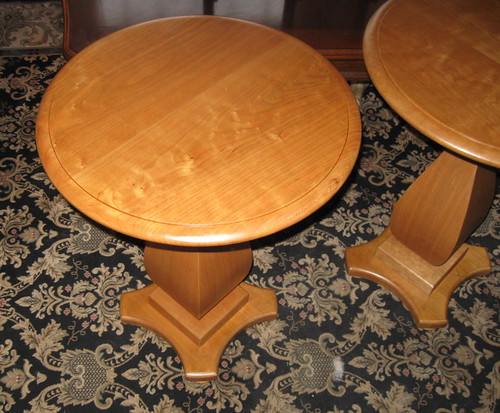
I'm no photographer, so I just take a bunch of pics with different settings, with and without flash, and pick the ones that don't look too bad.
Ready for delivery on Christmas, but the finish will still be soft for a few days/weeks.
Tuesday, December 23, 2008
Painted hall table begins

Even more to my surprise, I also managed to pull full-width, full-length shavings on the end grain with my super-duper LN LA block plane - what a great feeling.
Monday, December 22, 2008
I hate finishing
More wet finish...
After jerking around trying to get them perfect (and just making it worse), I finally just sanded it down and put another coat on the tops. Hopefully this will be "it."
Saturday, December 20, 2008
No fun

Also, with all that wet finish sitting out for a day you can't really make any dust - so, no more woodworking until the finish on these is done. Finishing always seem to fall on a weekend when I have big chunks of time available to do woodworking, so I'm hog-tied: twenty minutes of brushing then a day of sitting around = no fun.
Wednesday, December 17, 2008
Monday, December 15, 2008
Woodworking injury!

When you're still veneering at 3AM... and you feel like it's OK to work tired because you're not using power tools... and you're holding an iron upside-down in your left hand to heat up the glue so you can work the seam with your right hand....
Sunday, December 14, 2008
Assembly

1. Hanger bolt - the wood threads will drive into the pedestal, the machine threads will receive the threaded insert.
2. The brass threaded insert which will go in the top.
3. The jig to set the insert: a pair jam nuts with the insert threaded on. This will allow driving the insert into the top with a wrench (the wrench turns the top jam nut which spins the whole thing).
4. A few test holes and a practice drive.
I'd much rather chuck a piece of all-thread with the jam nuts and insert in the drill press. The drill press holds it all vertical/ perpendicular to the work so it threads in straight (you don't want the insert to thread in on an angle for obvious reasons). The drill press is too small for the tops, tho, so I'll be threading them in by hand/eye - hence the practice run.



Some of the color variation you're seeing here is because some of the parts are sanded and some aren't. The top on the left, e.g., looks a lot lighter because it was sanded. Sanding dulls the gloss and leaves a white dust.
Right now my finishing plan is to spray them with shellac and see how they look. If they're too glossy, I'll shoot some Waterlox satin on them and see how that looks - the same stuff I used on the bed. Spraying finish is a little weather-dependent for me, because I spray in the garage (out into the driveway). Daylight is a big plus, too.
My brother-in-law is a professional painter with LOTS of spraying experience. He's due in for a week long visit this Thursday, so maybe I'll wait and recruit him to do it.
Thursday, December 11, 2008
Gyrations of a noob
Lest you think I know what I'm doing, here are two relevant threads in which I got inspiration, guidance, and a healthy push to do the veneering.
1. WoodNet - before I decided to do the veneer at all.
2. Woodworker's Zone - mentor's forum post.
Squaring a large blank (in a small shop)















